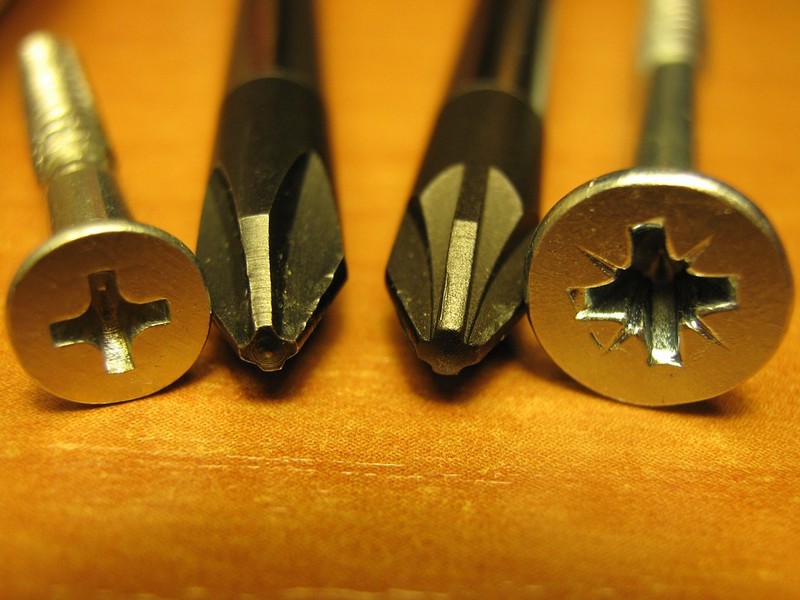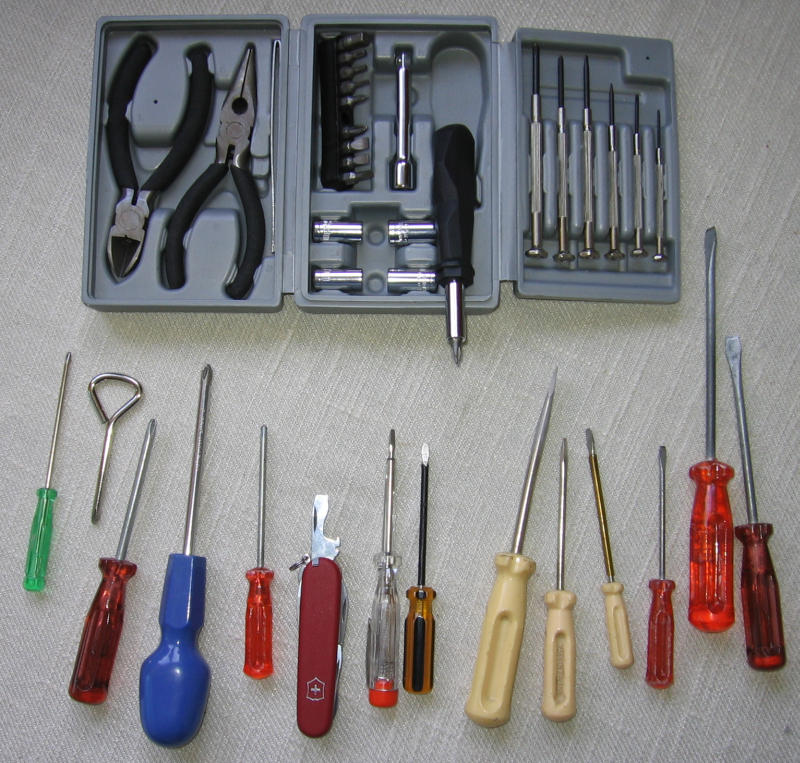Крестовая отвертка - нелегкая история её изобретения

Отвёртка — ручной слесарный инструмент, предназначенный для завинчивания и отвинчивания крепёжных изделий с резьбой, чаще всего винтов и шурупов, на головке которых имеется шлиц (паз). Обычно представляет собой металлический стержень с наконечником и рукояткой (пластмассовой или деревянной).
Крестовая отвертка — непременный атрибут любого набора инструментов вашего отца или любой мастерской. Но история изобретения ее в 1930-е была принята сообществом далеко не сразу.
Первое появление классических винтов под отвертки с «плоским» жалом датируется примерно XVI веком, в почти неизменном виде они существовали до начала XX века. К этому времени винты с прорезью уже вызывали множество нареканий, но были вне конкуренции из-за своей дешевизны. Недостатки «классических» винтов особенно ярко проявлялись при массовой сборке, в частности, в автомобильной промышленности. Во-первых, жало не центрировалось, из-за этого механические шуруповерты часто соскальзывали, оставляя царапины на лакированных кузовных деталях. Во-вторых, при закручивании винты и шурупы часто «перетягивали», сворачивая головку или повреждая крепежные детали. Именно эти ограничения и собрался преодолеть американский изобретатель Джон Томпсон, в 1933 году запатентовав отвертку с крестообразным жалом и винт с соответствующей головкой. Однако попытка продать изобретение производителям метизов не увенчалась успехом. В 1934 году Томпсон познакомился с инженером Генри Филлипсом и изложил ему суть своего изобретения. Филлипсу идея понравилась, он выкупил права на патент Томпсона и организовал компанию Phillips Screw Company (она существует до сих пор). В 1936 году он усовершенствовал технологию и разработал способ массового производства винтов. Крестовые винты автоматически центрировали шуруповерт, а также не допускали «перетягивания» — жало инструмента просто проскальзывало.
Однако и Филлипса везде поджидали отказы. Наконец ему удалось заинтересовать Юджина Кларка, президента American Screw Company, крупнейшего производителя метизов в США. Хотя инженеры компании возражали, Кларка так захватила идея, что он пригрозил «уволить каждого, кто скажет, что это невозможно осуществить». Угроза возымела действие, и компания, вложив в организацию производства полмиллиона долларов, начала выпуск винтов под «крест». В 1937 году GM впервые использовал эти винты в производстве моделей Cadillac. Результаты были столь блестящими, что уже к 1940 году все американские автопроизводители перешли на использование крестовых винтов, а производители метизов десятками выстраивались в очередь на покупку лицензии. Во время Второй мировой войны на использование этих винтов перешли и производители военной техники — танков и самолетов.
С тех пор было придумано немало различных винтов — и под многогранники, и под звездочки различной формы. Но, несмотря на это, крестовые винты и шурупы (в англоязычных источниках они называются по имени изобретателя — Phillips) по-прежнему остаются стандартом, а крестовая отвертка является основой любого набора инструментов.
 Конструкция
Конструкция
Простейшая отвёртка представляет собой обычно стержень с наконечником, который при работе вставляют в шлиц, другой конец стержня снабжён деревянной, пластмассовой или резиновой рукояткой. Материал рукоятки и её форму выбирают исходя из соображений повышения сцепляемости с рукой.
Диаметр рукоятки находится обычно в пределах от 10 до 40 мм. Поскольку зависимость между диаметром рукоятки и крутящим моментом, выдаваемым на деталь, прямая, то обычно диаметр тем больше, чем больше размер деталей, под шлиц которых рассчитана отвёртка. Поэтому отвёртки, предназначенные для мелких деталей, снабжаются тонкими рукоятками во избежание срыва шлица или резьбы или разрыва детали. Некоторые отвёртки имеют в рукоятке отверстие, которое позволяет усилить вращающий момент при использовании рычага, продеваемого в это отверстие, или используется для крепления страховочного шнура.
Наконечник отвёртки изнашивается из-за действия значительных механических напряжений в процессе работы. Для увеличения срока службы наконечника его изготавливают из специальных износостойких и прочных сплавов, например, из хром-ванадиевых -молибденовых сталей.

 Виды наконечников
Виды наконечников
В зависимости от типа шлица на головке детали, используются отвёртки с различными типами наконечников.
Стандартные - Получили повсеместное распространение.
- Прямой шлиц (шлицевой) — самый простой и исторически первый вид шлица.
- Phillips — крестообразный самовыталкивающийся. На данный момент устарел, но продолжает широко применяться в приборостроении, так как является стандартом де-факто и занимает мало места в головке.
- Pozidriv — усовершенствованная версия шлица Phillips, несамовыталкивающийся. Из-за большой глубины шлица применяется только там, где винты вынуждены иметь большие головки: в мебельном производстве и строительстве. Впрочем, именно в этих отраслях нужен большой крутящий момент, принципиально невозможный для Phillips.
- Шестигранный шлиц — позволяет получить большой крутящий момент.
- Torx (звёздообразный шестилучевой) — позволяет получить большой крутящий момент, применяется в производстве бытовой техники, машиностроении.
Специальные - Если к винту предъявляются специальные требования, такие как красота, защита от выкручивания или огромное усилие затяжки в компактной головке, применяются специальные шлицы.
- Tri-Wing (трёхлопастной) — используется в авиакосмической промышленности и в производстве электронных устройств.
- Torq-Set (асимметричный крестообразный) — применяется только в авиакосмической промышленности.
- One-way — не предусмотрен для выкручивания.
- Двухштырьковый (спаннер) — применяется в лифтах и других местах, где требуются одновременно красота и вандалозащита.
- Шлицевая с прорезью-аналогично спаннеру, применяется в электроприборах, блоках питания, где нежелательно дилетантское вмешательство.
- Torx со штырьком (Torx Tamper Resistant) — звездообразная шестилучевая с отверстием посередине, куда входит штырек посередине шестилучевого углубления винта.
Via www.popmech.ru
Created/Updated: 25.05.2018
